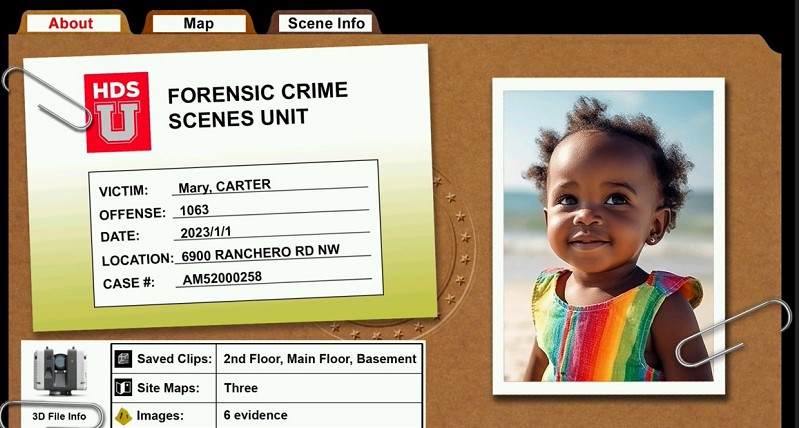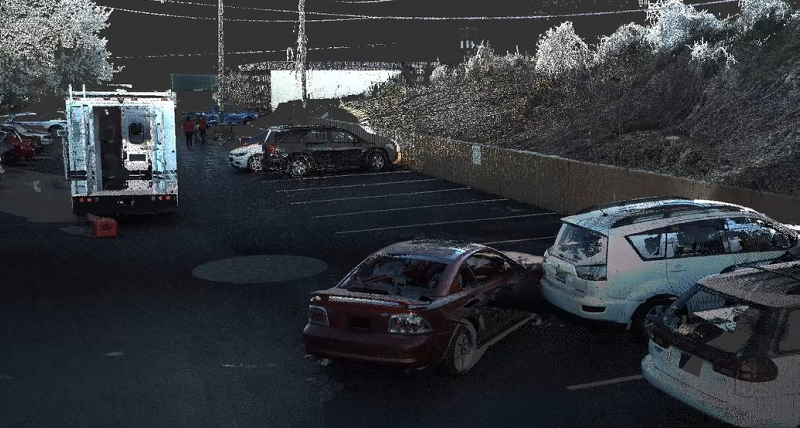How to build a powerful sitemap for detectives and attorneys
A few small modifications to how you handle laser-scanned point cloud data from a crime or crash scene can have a big impact on how the data is used in the court system.

Laser scanning is widely recognized as the best way to quickly capture comprehensive and scientifically accurate data on crime and collision scenes. With state-of-the-art technology like the Leica RTC360 laser scanner or next-generation BLK360 laser scanner, you can document your entire scene in minutes with clean, high-density point clouds that enable you to investigate cases and build compelling 3D reconstructions that can be viewed from any angle. You can use the free Leica TruView for quick and easy viewing of point cloud data on any device.
But detectives and attorneys aren’t always impressed by point cloud data. They need more context to understand how the data fits within the overall case. How can you easily create a deliverable that will be advantageous to everyone involved in a case?
Vincent T Joachim, 3D specialist for the City of Calgary and the Calgary Police Service, devised a new approach to SiteMaps that is so powerful it’s driving widespread adoption of laser scanning throughout the Calgary legal system. He says any agency can achieve the same results by thinking differently about the data. Here are his tips for building a powerful SiteMap.
1. Learn the technology
Vincent’s first foray into laser scanning was a week-long in-person course presented by Ken Jones, Leica Geosystems public safety customer success manager. From there, he jumped into learning about the technology through Leica’s online resource library, where he took classes on Leica TruView digital reality viewer, optimizing the use of the RTC360 laser scanner, and much more. To date, he has logged over 120 hours over Leica-provided online material.
“The classes were perfect for me,” Vincent says. “I was able to watch the videos, pausing and rewinding as needed. I dove in, and I’m now a certified analyst.”
2. Understand your audience
With a background as an artist and filmmaker, Vincent has an eye for visual storytelling. He immediately recognized how powerful a SiteMap could be with embedded photos, audio and video surveillance footage, and other evidence. “It’s like putting the audience, the person viewing it, inside of the crime scene,” he says.
But getting detectives and attorneys to interact with the data requires an interface that is both familiar and easy to navigate.
Before he begins working on a case file, Vincent meets with the detectives and prosecutors to review the material and determine what elements would be most useful to them in the deliverable, whether it be flythroughs, scene diagrams, ortho views, or other perspectives.
He then creates a digital file folder that includes a photo of the victim, the date and location of the homicide, and the case number, along with tabs that make it easy to navigate to the map, scene details, and other requested elements. The visuals and links are easy to add in the TruView software.
“We’re expanding what we can do with the 3D files and how they can be used in court,” Vincent says.

3. Humanize the data
Laser scan data minimizes cognitive bias in documenting and sharing physical evidence. The resulting digital twin becomes the primary source of irrefutable physical evidence that is used to answer questions, challenge assumptions, show different viewpoints, and create compelling and immersive visualizations that are scientifically accurate.
But the human element of a crime is always the primary focus. “Seeing a picture of the victim is compelling,” Vincent says. “It humanizes the situation so that instead of thinking first about the crime scene, you’re thinking about what happened to this person. The way you present and organize the material can have a big impact on how people view it.”
Since SiteMaps can be customized with different tabs and designs, any police service or agency can create compelling deliverables that meet their specific needs.
“Laser scanning technology is revolutionizing police work,” Vincent says. “Giving detectives and prosecutors new ways to navigate through 3D data presents a huge opportunity to bring justice to crimes.”




























